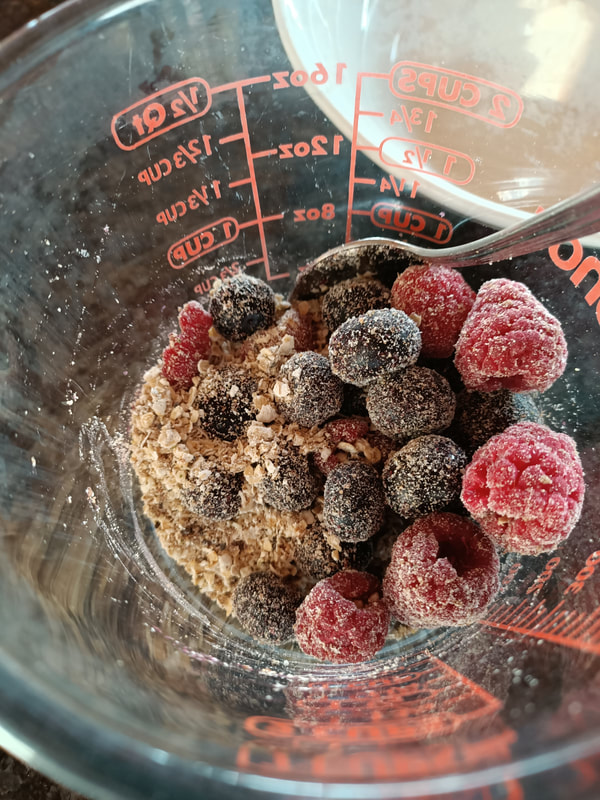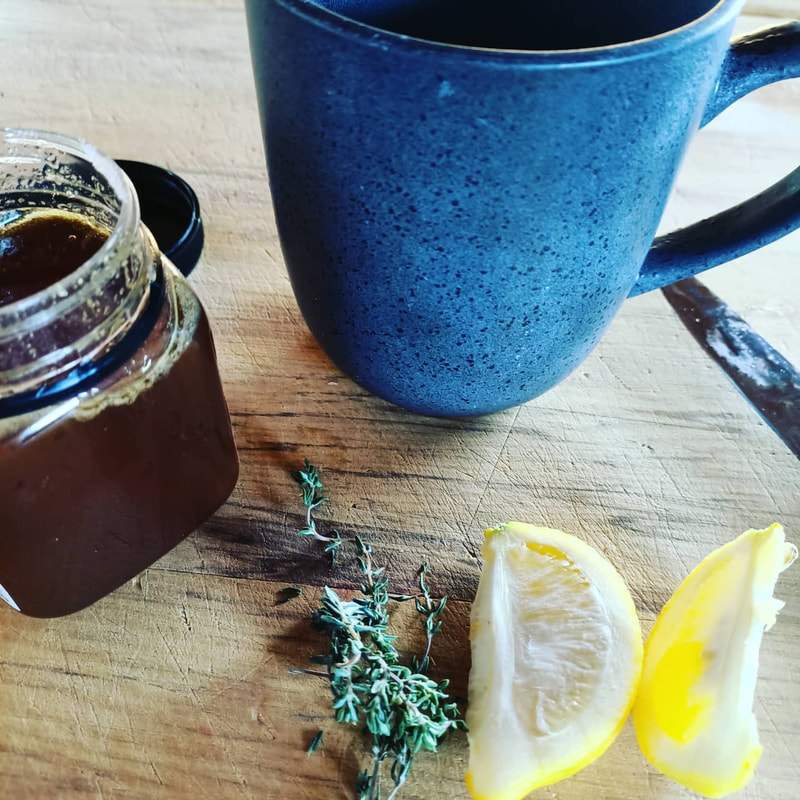|
Menopause - signs and symptoms
Menopause - 5 natural remedies Natural Remedies for Allergies/Hay fever Nutrient of the Month - Zinc Health Conditions Fibromyalgia - The first signs and symptoms Fibromyalgia Misdiagnosis - Have I got fibromyalgia or something else?
1 Comment
Eating fermented foods regularly can help support a healthy gut microbiome by adding beneficial gut bacteria. This has been proven to have many benefits on our health including reduced inflammation, better digestion and may even help curb obesity and diabetes.
I recently spoke about fermented foods at my Wellbeing on a Budget event in October and how although cabbage is really expensive right now, making your own fermented foods is still a budget friendly option for those wanting to add healthy gut bacteria to their health regime. Fermented foods are foods, usually vegetables, that have been prepared with salt and sometimes vinegar and left to ferment. This is a way of preserving foods to extend their usability that has actually been around for centuries and societies all over the world included them in their diet. Western culture in particular seemed to forget these foods with the advent of other less healthy ways of preserving foods and I believe this has had a negative effect on our gut health. Many artificial preservatives and processes used to keep foods fresh now actually harm our good bacteria. If you are wanting to try the benefits of fermented foods for yourself, try making a simple sauerkraut recipe. Caution if you normally eat mainly processed foods, go slow as your gut may initially only tolerate a small amount of new bacteria or you could experience bloating and gas. An upset stomach from fermented foods can often indicate dysbiosis, which means the gut flora is really out of balance and might need some specific treatment. As I write this we are in our fourth week of Covid related lockdown, in Auckland, while the rest of the country is opening up with looser restrictions. At level three, takeaways are available, causing some envy with Aucklander's still only able eat home cooked meals. While I am personally not a big fan of takeaways for obvious reasons - high salt, high sugar, trans fats - I do love a good quality Thai style yellow curry as a treat.
This recipe is my go to when I am craving this. It is a healthy spin on my takeaway fix as it is a little more balanced with extra vegies, it is tummy friendly being dairy free and gluten free, has no trans fats, less salt and sugar and could easily be made vegan by swapping fish for chickpeas and lentils. Give it a try and let me know how you find it, in the comments below. blog by Megan RoddenOver the next few months’ I will be focussing my blog posts on some common conditions that are seen in clinic. I decided to start with this one because it was something that I have been diagnosed with myself and worked over the last 10 years to resolve with natural medicine. What is this syndrome? Chronic Fatigue Syndrome (CFS) and Fibromyalgia are conditions that are regularly diagnosed together and involve a set of similar symptoms; ongoing extreme tiredness and pain all over the body. They are both complicated and difficult to diagnose because they mimic other illnesses in their symptoms. People with these syndromes often also have symptoms of Raynaud’s Phenomenon, irritable bowel syndrome, anxiety or depression. What are the most common symptoms? Fibromyalgia
How is it diagnosed? I recommend initially seeking help with this from a GP, who can run tests and navigate referrals but generally rheumatologists or internal medicine specialists use a set of criteria involving sites of pain for fibromyalgia and symptom criteria for CFS. It is considered difficult to diagnose and criteria have been debated amongst health professionals. A holistic approach Pain and tiredness are natural warning signals in the body telling us that something is out of balance, this may involve looking at all aspects of our health, including the mind, body and spirit. The true cause for these conditions is unknown however it is believed to involve the brain, muscles, and stress response system. Central changes in pain detection and response are also considered to be involved and often follows an invasive or environmental factor such as a viral infection, a stressful event, another syndrome or condition such as arthritis and HIV. Changing our diet, lifestyle and habits have been found supportive, using a holistic approach including the following techniques and therapies: Herbs -prescribed by a naturopath they may reduce symptoms and encourage healing processes in the body. My top 5 supportive herbs are Rhodiola, Liquorice, Cayenne and St John’s Wort. Relaxation Massage – regular individual programs may be helpful to manage pain and improve sleep. Reduce toxin exposure- eat organic, remove amalgam fillings, swap chemicals for natural products. Some studies have shown heavy metals such as mercury could be linked to fibromyalgia and cause damage to the body leading to fatigue – more research is needed fully understand this relationship. Exercise that is restorative such as Yoga, Thai chi and Pilates may help improve energy and relieve pain as well as being known to boost your mood. My favourite food tips that I use for fibro: Food to increase-
Food to decrease-
Sources: Arthritis New Zealand. (2011). Fibromyalgia. Retrieved from Arthritis New Zealand: https://www.arthritis.org.nz Beks, H. (2017). Fibromyalgia - symptoms of a weary old soul. Retrieved from Heavenly Earth Projects: https://www.heavenlyearthprojects.com.au Biundo, J. (2018). Fibromyalgia. Retrieved from Merck Manuals Professional version: https://www.msdmanuals.com Bone, K., & Mills, S. (2013). Principles and Practice of Phytotherapy. London: Elsevier. Braun, L., & Cohen, M. (2015). Herbs and Natural Supplements. Chatswood: Elsevier. Craft, J., Gordon, C., Huether, S., McCance, K., Brashers, V., & Rote, N. (2015). Understanding Pathophysiology. Victoria: Mosby. Edwards, D., Heufelder, A., & Zimmerman, A. (2012). Therapeutic effects and safety of Rhodiola rosea extract WS® 1375 in subjects with life-stress symptoms--results of an open-label study. Phytother Res. DOI:10.1002/ptr.3712. Retrieved from US National Library of Medicine, National Institutes of Health: https://www.ncbi.nlm.nih.gov Fisher, C. (2009). Materia Medica of Western Herbs. Auckland: Painter. Hechtman, L. (2016). Clinical Naturopathic Medicine. Victoria: Elsevier. Millea, P., & Holloway, R. (2000). Treating Fibromyalgia. 1;62(7):1575-1582. Retrieved from American Family Physician: https://www.aafp.org/afp/2000/1001/p1575.html Russell, I., Orr, M., & Littman, B. (1994). Elevated cerebrospinal fluid levels of substance P in patients with fibromyalgia syndrome. Arthritis Rheum ;37:1593-601. Retrieved from US National Library of Medicine National Institutes of Health: https://www.ncbi.nlm.nih.gov Therapeutic Research Centre. (2019). Licorice. Retrieved from Natural Medicines Database: https://naturalmedicines.therapeuticresearch.com Therapeutic Research Centre. (2019). Rhodiola. Retrieved from Natural Medicines Database: https://naturalmedicines.therapeuticresearch.com Watzl, B., Girrbach, S., & Roller, M. (2005). Inulin, oligofructose and immunomodulation doi:BJN20041357. Retrieved from British Journal of Nutrition: www.cambridge.org Wilson, J. (2001). Adrenal Fatigue, The 21st Century Stress Syndrome. Petaluma: Smart Publications. Woelk, H. (2000). Comparison of St John's wort and imipramine for treating depression: randomised controlled trial. doi:BMJ 2000;321:536. Retrieved from The BMJ : https://www.bmj.com/ Disclaimer: This article is not designed to diagnose or treat any conditions and readers are strongly advised to always seek professional help with their health symptoms. It is purely designed for information purposes only. Photo by Anete Lusina from Pexels Cholesterol balance is an important part of maintaining cardiovascular health. With a family history of cardiovascular disease and the loss of my father from heart failure at a young age, it is something that is very much on my radar.
Imbalanced cholesterol levels are linked to disease however diet and lifestyle have been shown to have a big impact on tackling this area of health. One simple daily self-care practice I employ is a porridge recipe purposefully created to include supportive foods - soluble fibre, antioxidants and essential fatty acids. I love meals like this because they contain synergistic ingredients that support the bodies own healing mechanisms and can easily become part of a daily routine. Soluble fibre - this helps the body to excrete excess cholesterol Antioxidants - these reduce inflammation that drives high cholesterol and support better artery health Omega 3 fatty acids - to provide healthy fats to balance cholesterol ratios and provide anti-inflammatory support for the whole body. Most of our foods are very high in Omega 6 and low in Omega 3 - creating imbalance in our body. Ingredients 1/4 of a cup of organic oats or quinoa flakes - soluble and insoluble fibre 1 teaspoon of ground flax seeds - sources of omega 3 fatty acids and soluble fibre 1/2 teaspoon of psyllium (if sensitive - swap for 2 teaspoons of flax) - soluble fibre 1 cup of frozen organic blueberries and raspberries - rich in antioxidants 2 teaspoons of hemp seeds - source of protein 1 1/4 cup of water or almond milk - this can be increased to create a texture to your liking. Method Combine all ingredients and cook on low to medium heat, simmer to 3-4 minutes until you reach your desired porridge consistency. I find the berries make it sweet and flavoursome but can you could add a sprinkle of extra fruit or a dash of honey as well. As the weather warms up this recipe can be adapted into cold version of bircher muesli - simply add more water and soak in the fridge overnight, which is also great for busy mornings. This blog is designed only to inform and inspire and cannot diagnose or treat, if you have a health issue please see a health professional. If you are interested in a personalised nutrition plan or specific naturopathic support please get in touch. I am obsessed with tea and this is one of my favourites right now.
Juice of half a lemon, 1 teaspoon of organic thyme - crushed to help release the oils and 1 teaspoon of manuka honey. Steep for 5-10 minutes. I have been enjoying this tea since the first lockdown in March and first posted this on my Facebook page early in our second lockdown and thought I would re-share it here. Thyme and manuka have purifying antimicrobial properties, lemon is known for its immune boosting and uplifting nature. So for me it is a lovely tea for the stressful times that we are experiencing. I always feel good and refreshed for drinking it and love to have the lemon after a meal with protein as I feel the digestive benefits. |
Archives
February 2023
Categories |







 RSS Feed
RSS Feed